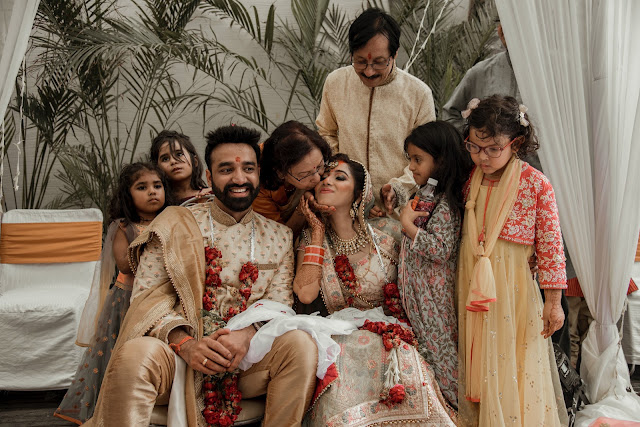Indian Wedding Ceremony: Celebrating Love and Tradition
What are the Pre-Wedding Rituals in India?
Indian weddings are not just about the ceremony itself but also involve a series of Sacred wedding Rituals that serve to prepare the bride and groom for their big day. These rituals vary depending on the region, religion, and community but are always steeped in tradition and meaning.
One of the most popular pre-wedding rituals is the Mehendi ceremony. This involves applying henna designs on the bride's hands and feet. The intricate patterns are not only beautiful but also symbolize love, happiness, and prosperity. In some traditions, the groom's name is hidden within the designs, and he must find it before the wedding.
Another important pre-wedding ritual is the Sangeet ceremony. This is an evening of music, dance, and celebration where family and friends come together to sing, dance, and have fun. The bride and groom's families also perform skits and dances, making it a night to remember.
A Comprehensive Guide to Planning a Perfect Wedding Ceremony
The Indian wedding ceremony itself is a beautiful and elaborate affair that can last for several days. It typically involves multiple ceremonies and rituals that vary depending on the religion and region. However, the most common elements include the following:
Baraat: The groom's procession that typically includes a horse or an elephant, accompanied by music and dancing.
Kanyadaan: The giving away of the bride by her father to the groom.
Phere: The couple takes seven vows around a sacred fire, symbolizing their commitment to each other.
Sindoor: The groom applies sindoor, a red powder, on the bride's forehead, signifying that she is now a married woman.
Mangalsutra: The groom ties a sacred necklace around the bride's neck, symbolizing their eternal bond.
The Reception
After the wedding ceremony, the couple and their families host a grand reception to celebrate their union.
This is a time for friends and family to come together, eat, drink, and dance the night away. The reception typically includes a lavish feast, speeches, and performances by family and friends.
In a Nutshell
If you're planning an Indian wedding or simply want to learn more about this beautiful celebration, you're not alone. With its rich cultural heritage and beautiful traditions, Indian weddings have become increasingly popular around the world.
However, with so much information available online, it can be challenging to find reliable and informative resources. That's where we come in. Our website provides comprehensive and accurate information about Indian weddings, from pre-wedding rituals to the wedding ceremony and reception.
Our articles are written by experts in the field, with a deep understanding of Indian culture and traditions. We provide detailed information on everything from the meaning behind henna designs to the significance of the wedding rituals.
So, if you're looking for the ultimate guide to Indian weddings, look no further than our website. Our informative and engaging articles will provide you with everything you need to know to plan and enjoy the perfect Indian wedding ceremony.





Comments
Post a Comment